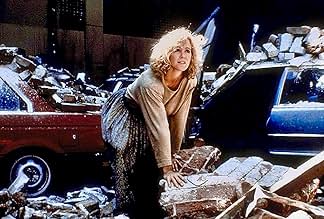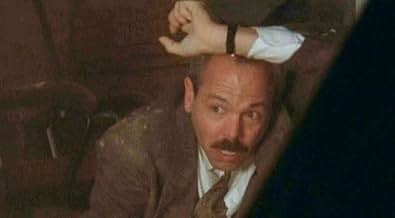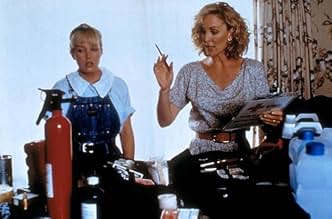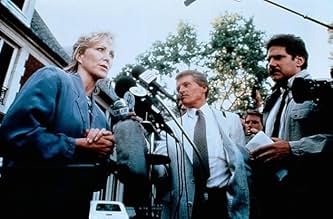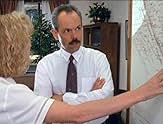Le grand tremblement de terre de Los Angeles
After a series of small tremors in Los Angeles, Dr. Clare Winslow, a local seismologist, pinpoints the exact location and time of when the long awaited earthquake--"The Big One"--will strike... Read allAfter a series of small tremors in Los Angeles, Dr. Clare Winslow, a local seismologist, pinpoints the exact location and time of when the long awaited earthquake--"The Big One"--will strike southern California. With this information, she must battle city officials to release thi... Read allAfter a series of small tremors in Los Angeles, Dr. Clare Winslow, a local seismologist, pinpoints the exact location and time of when the long awaited earthquake--"The Big One"--will strike southern California. With this information, she must battle city officials to release this information to the general public. Also, she hopes that her family is out of harms way w... Read all
- Awards
- 1 nomination total
Featured reviews
Irritating subplots aside (Robert Ginty's greedy developer engaging in what I'd call "Quakegate"; Joe Spano's emergency management chief torn between Ginty and Kerns; Richard Masur's Geraldo-like tabloid TV reporter), THE BIG ONE is just too effective in its depiction of destruction on a scale not seen in a long time. Kerns' performance as seismologist Claire Winslow is clearly modeled off of CalTech scientists Lucy Jones and Kate Hutton. The film's science is also pretty straight-on, especially when one realizes that the quakes that have shook up Southern California since the 1971 Sylmar event have not occurred along the dreaded San Andreas Fault but on faults of which little or nothing is known about.
So whatever plot pratfalls it has, THE BIG ONE still works as an ultimate science fiction/disaster movie, at least from the science angle.
For a made for TV movie I am pleased by how the movie stays away from overt corniness and try's to tell a good story, but there is problems. The movie is 3 hours long, with 2 of those hours leading up the earthquake and 1 hour dealing with the earthquake and after, then it abruptly ends. The movies does a good job of showing the disaster, but there could have been at least another hour dealing with what happens after the quake. It takes 2 hours to get to the quake and then it speeds along and ends.
What can one really expect from a made for TV movie anyways? As long as it entertains that's really the important key to a successful movie. I will say it is a cut above some of the Hollywood disaster movies of the 90's which usually were cheesy and dumb. I wouldn't watch this movie and expect to be blown away, but if you are looking to entertain yourself for awhile then I recommend this movie.
Did you know
- TriviaFollowing the final scene, a list of US cities threatened by earthquakes is shown. "According to the US Geological Survey, at least 39 states other than California are expected to experience major earthquakes in the future" Some of the cities that will be hardest hit include: Anchorage 9.2 Boston 6.5 Charleston 8.0 Memphis 8.0 New York City 6.5 Portland 9.0 Reno 7.0 St Louis 8.0 Salt Lake City 7.0 Seattle 9.0 "No city is currently as prepared as the city of Los Angeles."
- GoofsSouth African Trade Minister David Motubu, a black man, could not have held any political office in South Africa during the apartheid era, which did not end until four years after the movie was made.
- Quotes
Dr. Clare Winslow: [check listing earthquake kit] $500 cash.
Heather Winslow: Why so much money?
Dr. Clare Winslow: Computers will be down, the banks could be closed for days.
- Alternate versionsWhen the NBC-TV network premiered this film over two nights in November 1990, NBC News added earthquake safety tips and news information at the end of each night of the miniseries. The information was provided because of the potential for deadly quakes at other fault lines in the USA and in particular reference to the New Madrid Earthquake Zone in the central USA which was predicted to quake on December 3, 1990.
- ConnectionsEdited from Emergency! (1972)
Details
Contribute to this page



